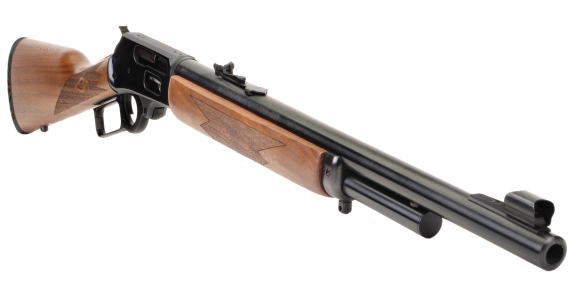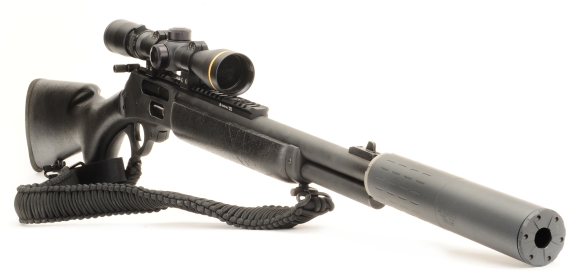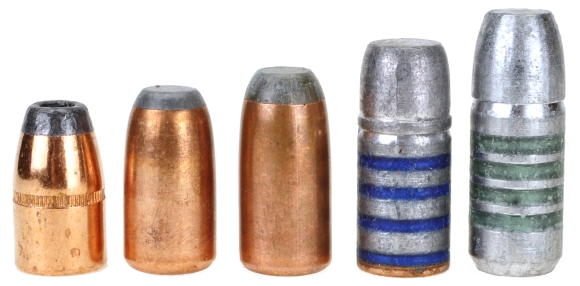11/28/2021 – The thrash was on yesterday. Everything snow related was pulled out of the shed. Everything landscaping related was put into the shed. Powered equipment was started and ops checked. This morning we were greeted with a few inches of snow. Timing is everything.
The biggest challenge to winter prep was suspender related. I don’t like them as they make me feel like Wilford Brimley. My wife likes me to wear them because she cannot see why I would want to walk down the driveway behind a snowblower, pulling up my pants every other step. She has no idea what it means to feel like Wilford Brimley.
The Marlin 1895 and the 45-70 Government cartridge
The firearm and cartridge combination that have met my centerfire hunting rifle needs have been in production for over a century. More specifically, the rifle has been with us for over 125 years and the cartridge for over 148. No, I would not have held the same opinion at the point of origin for either.
The modern Model 1895 is based on the 1948, round bolt, closed top receiver Model 336, rather than the original square bolt Model 1895. The original design was made for black powder versions of the 45-70 Government cartridge operating at 18,000 PSI chamber pressure. The modern version of the Model 1895, with design and material improvements was designed to operate with smokeless powder and 28,000 PSI with an industry margin of safety.
Modern versions of the 45-70 cartridge, identified as 45-70 +P or 45-70 Magnum, operate in the range of 33,000 PSI to 40,000 PSI. For the sake of context, proof loads intended to test centerfire rifle design/production integrity, limited to 10 rounds, are loaded to 140% of the cartridge’s commercial pressure standard. In the case of the 45-70 Government, proof loads operate at 40,000 PSI. Again, proof load pressure was never intended for continual use.
Used as directed by the established manufacturers of modern higher pressure ammunition, the Marlin Model 1895 can cope, but that benefit comes with a price; accelerated wear and tear and a need for a watchful eye for close inspection. Considering full tilt loads are useful only under special circumstances, like when hunting very big and/or dangerous game, the typical Marlin Model 1895 would not routinely see this much ballistic stress. SAAMI standard pressure ammo is more than adequate for anything else and a lot easier on the shooter.
When I am too lazy… err, too busy to handload

The 5 rounds pictured above can get just about anything done that needs to be done. Hog hunting, deer, elk, moose, bear… cape buffalo, elephant all fall within the capabilities of one or more members of this group.
All Model 1895s are not created equal. The Marlin 1895 Guide Gun pictured earlier has an 18.5″ barrel. The Marlin Model 1895 Dark Series picture above has a 16.25″ barrel. The standard Model 1895 is supplied with a 22″ barrel.The SAAMI standard test barrel typically used to set manufacturers’ velocity rating is 24″.
You would think the difference in barrel length would have a consistent and predictable influence on velocity but, as illustrated on the table below, this is not always the case. The 45-70 Government is a large bore, moderate capacity case. Subsequently, it does not push a great deal of unburned powder out of its muzzle.
| Cartridge | Bullet Type |
Bullet Weight Grains |
Rated FPS 24″ Barrel |
Recorded FPS 22″ Barrel |
Recorded FPS 18.5″ Barrel |
Recorded FPS 16.25″ Barrel |
Retail Cost Box/20 |
| HSM A-Frame | FNSP | 350 | 2050 | 2183 |
2108 |
2138 | $67 |
| Buffalo Bore Magnum | FNJ | 350 | 2150 | 2205 |
2146 |
2121 | $92 |
| Remington Core-Lokt | SP | 405 | 1330 | 1051 |
1154 |
991 | $61 |
| Buffalo Bore Magnum | LFN | 430 | 1925 | 1999 |
1862 |
1831 | $96 |
| Garrett Hammerhead | LFN | 540 | 1550 | 1547 |
1532 |
1483 | $80 |
Yes, I have seen testing where one rifle has its barrel length progressively shortened. Yes, that would illustrate the effect of barrel length on velocity… on that particular rifle and with that specific ammunition and that approach would provide valid data if all production rifles and ammunition were materially the same. As soon as the firearm, temperature, humidity, and/or barrel bore condition change, the data would no longer be valid… as illustrated on the table.
A near effortless 200 yard rifle… for a good 200 yard shooter
| HSM 350 Grain | |||||||
| Near Zero – Yards. | 18 | Mid Range – Yards. | 93 | ||||
| Far Zero – Yards. | 160 | Max Ordinate – Inches | +3.0 | ||||
| Point Blank – Yards | 170 | ||||||
| Best Zero : Range 0 – 300 yards | ||||||||||||
| Yards | 0 | 50 | 100 | 150 | 200 | 250 | 300 | |||||
| Velocity – FPS | 2108 | 1887 | 1681 | 1495 | 1332 | 1198 | 1095 | |||||
| Energy – FT-LBS | 3453 | 2768 | 2196 | 1737 | 1378 | 1115 | 932 | |||||
| Momentum – LBS-Second | 105 | 94 | 84 | 75 | 67 | 60 | 55 | |||||
| Path – Inches | -1.50 | 1.94 | 2.93 | 0.84 | -5.16 | -16.07 | -33.03 | |||||
| Drift – Inches | 0.00 | 0.00 | 0.00 | 0.00 | 0.00 | 0.00 | 0.00 | |||||
| Time Of Flight – Seconds | 0.00 | 0.08 | 0.16 | 0.25 | 0.36 | 0.48 | 0.61 | |||||
The exterior ballistics table generated by the Real Guns Ballistic Calculator represents best zero for a 6″ critical target. Up to 170 yards shooting distances requires no holdover. Holdover for 200 yards is only 5″. Kinetic energy is solid for big game out to 250 yards. In my part of the woods, literally my part of the woods, a tree, rock or hill would most typically keep shots inside 100 yards.
Handloads….
Most of my shooting is done with handloaded ammunition. Rather than inventory a large mix and supply of seriously overpriced factory ammunition and send some company’s CEO on exotic vacations and gated community living, I stock up on favored components. This allows me to mix and match as I see fit and save a ton of money for more frivolous use… food, clothing, paying taxes, etc.
Above, my favorites bullets that cover virtually all of my 45-70 application. Bullet weight range from 300 grains to 500 grains. L-R below:
Remington 300 grain JHP good for thin skinned, medium size game. Typical current price 42 cents per.
Hawk Precision Bullets 350 grain with 0.025″ thick jacket. Works with light to heavy loads, big, non fragmenting expansion. Up to large thin skinned game, but thicker jackets available. Typical current price 87 cents per.
Hawk Precision Bullets 400 grain with 0.025″ thick jacket. Works with light to heavy loads, big, non fragmenting expansion. Largest thin skinned game, but thicker jackets available. Typical current price 92 cents
Cast Performance 460 grain heat treated cast bullets. Works with heavy loads and deep penetrating, if not expanding. Typical current cost is 66 cents per.
Oregon Trail Bullets True Shot 500 grain hard cast was the original product, but no longer produced. Currently available from Acme Bullet, hard cast and Hi-Tek coated and at a current price of 40 cents per. They are the least expensive bullet for the largest, toughest game in North America.
Complete handload data for the bullets indicated and an update to all 45-70 load data with Part II.





Email Notification